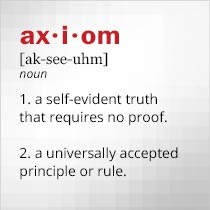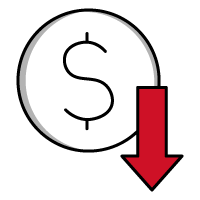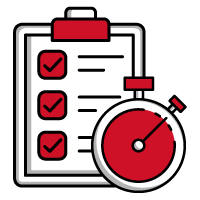Measuring Phase Noise And Why It Matters
November 07, 2016
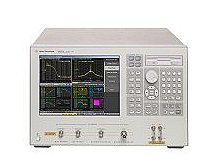 |
Phase noise describes a signal source’s short-term variations in frequency or phase as a function of time. That is how it is known in the frequency domain; it is also known as clock jitter in the time domain. A signal source, such as an oscillator or frequency synthesizer, without phase noise, would be capable of generating pure sine waves that would never vary from a tuned frequency: all of the source’s energy would be concentrated in the carrier frequency, with no frequency deviations to cause lower and upper noise sidebands at frequencies below and above the carrier, respectively.
However, real-world signal sources suffer short-term variations in frequency and phase noise. The amount of phase noise is a barometer for the amount of frequency stability possible from a particular signal source and how well it can be expected to perform in a particular application. The amount of phase noise can limit the effectiveness of a communications system operating with a phase-based modulation format, for example. For many reasons, it is useful to measure the phase noise of an oscillator or frequency synthesizer prior to installation in a communications or radar system, to determine whether it meets minimum frequency/phase stability requirements. Excessive phase noise can make it difficult to process Doppler information in radar systems, and degrade error vector magnitude (EVM) performance in digitally modulated communications systems.
Measurements of signal source phase noise can be performed on a number of different instruments, including on a spectrum analyzer. The noise will appear as lower and upper sidebands around the peak amplitude of the carrier frequency of the tuned source. While phase noise can be measured as single-sideband (SSB) or double-sideband (DSB) phase noise, it is important to compare different sources using the same conventions. Most source phase noise is measured within a 1-Hz bandwidth at some particular offset frequency from the carrier, such as 1 kHz, 10 kHz, 100 kHz, or 1 MHz, with the level of phase noise decreasing with the offset frequency from the carrier. In fact, the National Institute of Standards and Technology (NIST) defines phase noise as the ratio of the power density at a given offset frequency from the carrier to the total power of the signal at the carrier frequency.
Phase noise is typically represented as an amplitude level in decibels relative to the level of the carrier signal; measured in a 1-Hz bandwidth at some offset frequency from the carrier frequency, such as -120 dBc/Hz offset 10 kHz from the carrier. It is ultimately limited by a thermal noise floor, kTB = -174 dBm/Hz, where k is Boltzmann’s constant, T is the absolute temperature of a load (such as a resistor), and B is the bandwidth. The thermal noise is broadband and flat with frequency but will rise as the temperature of a load, such as a resistor, rises as the result of ambient or operating temperature.
The noise of a spectrum analyzer will also increase with temperature. An increase in ambient or operating temperature will result in an increase in the analyzer’s noise floor and must be considered when using a spectrum analyzer for phase-noise measurements. A spectrum analyzer designed for measuring low source phase-noise levels will be equipped with a stable, low-noise local oscillator (LO), which is characterized by outstanding phase-noise performance. For most phase-noise measurements, a spectrum analyzer with lower-frequency tuning range of low-noise LO will provide the performance needed to evaluate signal sources for SSB phase noise within the frequency range of the instrument. The Axiom Test Equipment site sorts available RF/microwave spectrum analyzers by a number of different frequency ranges, with upper limits of 3 GHz, 8.5 GHz, 26.5 GHz, 40 GHz, and beyond 40 GHz to simplify the task of specifying a spectrum analyzer for phase-noise measurements.
In addition to a spectrum analyzer, several manufacturers, including Keysight Technologies (www.keysight.com), Rohde & Schwarz (www.rohde-schwarz.com), and Microsemi Corp. (www.microsemi.com), offer signal source analyzers capable of performing phase-noise measurements using several different approaches, including working as spectrum analyzers and using the phase-lock-loop (PLL) method of measuring phase noise. For example, the Keysight E5052A signal source analyzers cover a standard carrier frequency range from 10 MHz to 7 GHz, which can be extended to 26.5 GHz or even 110 GHz with the addition of an optional frequency downconverter. The standard E5052A analyzer characterizes phase noise in a 1-Hz bandwidth at offset frequencies from 1 Hz to 40 MHz, with typical SSB phase noise of -137.5 dBc/Hz offset 10 kHz from a 1-GHz carrier and -164.5 dBc/Hz offset 1 MHz from a 1-GHz carrier.
Signal source analyzers from Rohde & Schwarz includes the broadband model FSUP26 with a frequency range of 1 MHz to 26.5 GHz. It allows users to set offset frequencies from 0.01 Hz to 30 MHz with 0.01-Hz resolution. The FSUP26 features excellent spectral purity, with SSB phase noise of better than -135 dBc/Hz in a 1-Hz bandwidth offset 10 kHz from a 640-MHz carrier and better than -165 dBc/Hz in a 1-Hz bandwidth offset 10 MHz from a 640-MHz carrier.
The model 5125A phase noise and Allan deviation test set from Microsemi features simplified operation as the result of a highly digital architecture, without need of special calibration, and with the capability of low phase noise even for extremely low offset frequencies, such as 1 MHz. It has an input frequency range of 1 to 400 MHz and achieves phase noise of -130 dBc/Hz offset 1 Hz from a 100-MHz carrier, with a low noise floor of -170 dBc/Hz offset 10 kHz from the carrier.
Any one of these test sets can provide the outstanding noise performance needed for characterizing the phase noise of an oscillator or frequency synthesizer. The choice of test solution will ultimately depend on the operating frequency range of the source to be tested, with additional downconversion in some cases providing the frequency range needed to evaluate even millimeter-wave frequency sources.
Back to BLOG


